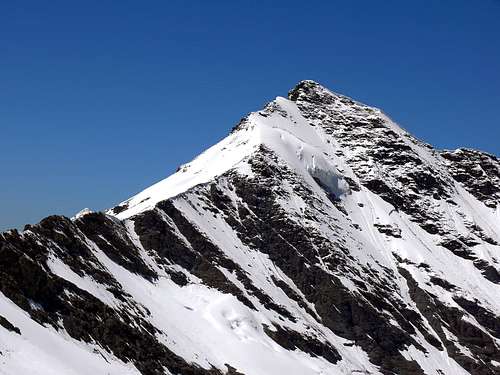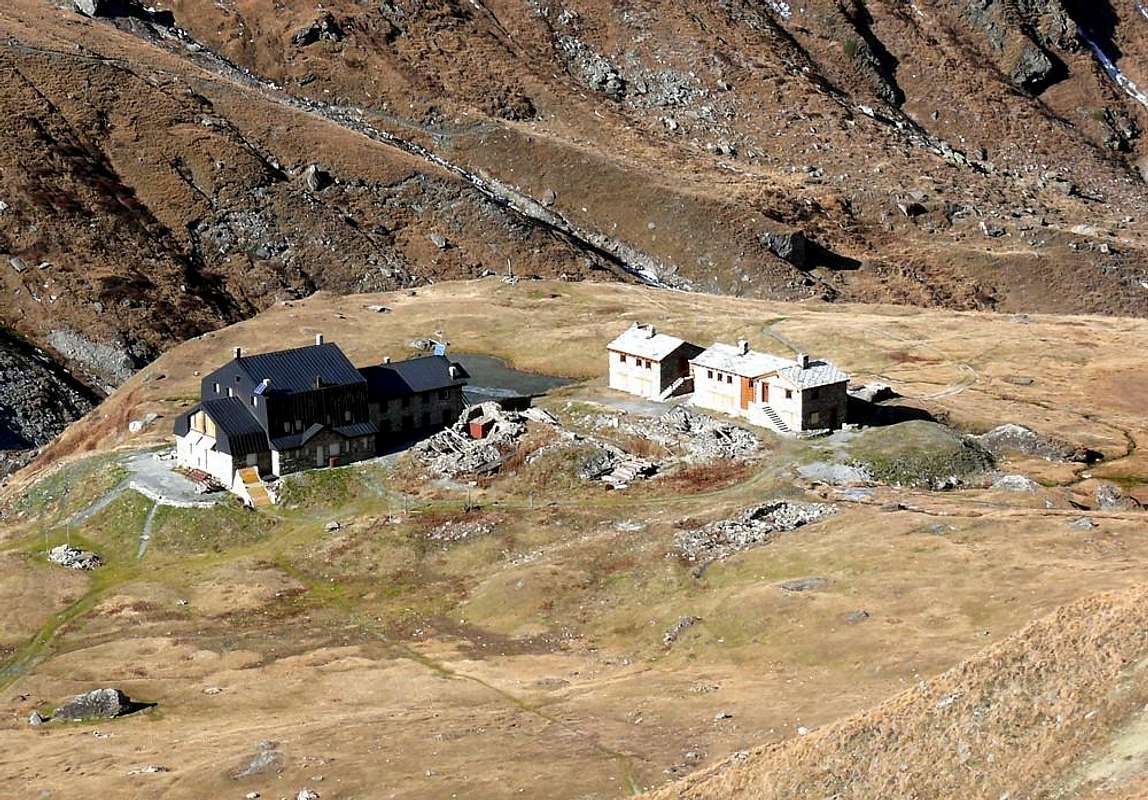-
 30018 Hits
30018 Hits
-
 94.96% Score
94.96% Score
-
 50 Votes
50 Votes
|
|
Mountain/Rock |
|---|---|
|
|
45.50530°N / 6.99988°E |
|
|
Mountaineering |
|
|
12306 ft / 3751 m |
|
|
Overview
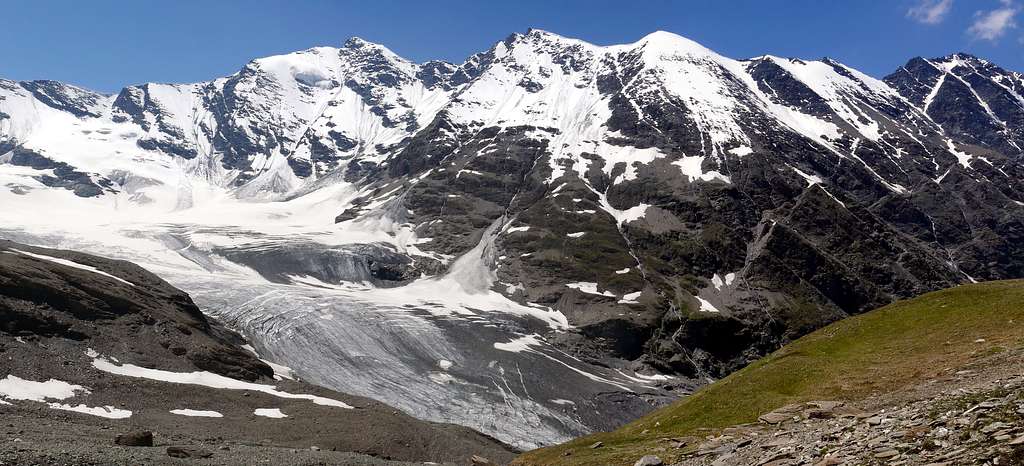
Important and imposing mountain, it is the highest Summit along the border ridge that goes from the sea to Colle della Seigne, before the Petite and Grande Aiguille des Glaciers into a mountain range of Mont Blanc. It is easily seen from Valgrisenche, the main center of the namesake valley, from which it appears as a beautiful pyramid with its snow-covered North Wall. It lies between the long Northern Crest, which descends to Becca di Suessa (3.420m), after having formed the Petite Sassière (3.672m), Punta Nant Cruet or Pointe du Nantcruet (3.510m), Punta Plattes or, as for Giovanni Bobba in "CAI Bulletin XXIV", Pattes des Chamois (3.610m), and the fairly long E-SE Ridge, with this second which leads to Colle della Sassière (the Western 3.240 meters, the Eastern 3.247 meters) and then rise again to Becca della Traversière (3.337m). This last ridge, which constitutes the Italian Normal Route starting from the Mario Bezzi Refuge (2.284m), presents, in addition to that of the two aforementioned hills, various possibilities of engagement on this side, that is from the Glacier de Glairetta. Also on the opposite or French side in the Parc National de la Vanoise in Val d'Isère and, or rather in the Réserve Naturelle de la Grande Sassière, it grants shortcuts, but they are totally inadvisable due to the fragility of the terrain, dangerously landslide above the Vallée de la Sassière with its namesake Lac (2.471m). For the something, arriving from Saint-Foy-Tarenteise (1.051m)and having reached Villaret de Nial(1.815m), go along the initial section of Vallée de la Sassière and then, at the crossroads at the Alpe di Saut (2.278m), turn sharply towards the NW reaching Plan de la Cassette. From this continue towards the Rocher de la Davie (3.156/3.158m) and, flexing slightly to the right (North), you reach the Western Crest, or French Normal Route, which easily leads to the Summit. This third ridge also has, orographically speaking, various extensions with a secondary branch to the SW from an altitude of 3.250/3.270 meters approximately, as well as, beyond the rocky-detrital Summit of the Rocher de la Davie, a more articulated branching suitable for to separate the Plan de Genievre to the W-SW from the Vallon du Nantcruet to the W-NW. As for the slopes and the walls, it should be noted that they have more value from a historical point of view than because they offer great or beautiful climbs. The first climbed was the large Southern Wall, high(over 1.350 meters)from the base just above the Chalets de la Sassière (2.347 m) and extended to over 5 and a half kilometers from Plan delle Cassette (in West) to below the two Colli della Sassière in the East (the Western 3.240 meters, the Eastern 3.247 meters), also passing the very tiny Petit Glacier. While a more "restricted" part, between the bifurcation below the SW / NW E Ridges and the mini glacier, itself reaches almost 4 and a half kilometers in width and the sector below the vertical of the Summit exceeds the Kilometer and a half. Unfortunately, a vastness, mountaineering speaking, "wasted" in its entirety due to the poor quality of the rock, suitable for everything except for climbing as it is made up of Cyrene limescists, chlorite schists or crystalline limestones and arenaceous and carbonaceous limescists of the Jurassic. On the opposite side the North Face descends, between the North Crest, up to the notch called Col de la Petite Sassière to the West and the Western Col of the Sassière to the East. The same, interspersed with a small suspended serac now in the process of disappearing, can be considered divided into two distinct facades with one of which is divided into two specific sectors: 1) - a face facing north-east with the lower and glacial part of greater height and facing decidedly to the East towards the Col de la Petite Sassière and a very short upper part as well as facing North with exit on the North Crest, before this presents a large cornice facing East (see photo below), on which the first route of the wall was traced in January 1917, even if, in reality, the route includes a path more typical of the hill itself than of the wall. 2a) - a face facing North-northeast, which, from the rocky tower of the Vetta, descends glacially, leaving on the right (East) a rocky islet in the shape of a small trapezoid at an altitude of 3.150/3.250 meters approximately, ending at an altitude of about 2.930/2.950 meters inside the Glacier de Vaudet. An itinerary traveled in August 1980 downhill to save time compared to the SE Ridge after the long ridge traverse starting from Col Vaudet (see note in the Mario Bezzi Refuge book of the time). This route descends from the rocky castle of the Cima, leaving the hanging serac on the right (East), flanking just below the long rocky ridge , which separates it from the 1917 route on the NE Face. 2b) - Further to the East-northeast, the wall has a sturdy rocky ridge, which originates at an altitude of 3.588 meters on the last stretch of the SE Ridge and ends at an altitude of 3.016/3.027 meters, almost at the junction of the Glacier de Vaudet with the Glacier de Glairetta at an altitude of a about 2.900/50 meters. A route climbs sinuously from the bergschrund starting at the base of rocky rib and taking itself to the base of the hanging serac at its right end going up else West; passed the same on its external side, it turns diagonally to the SW on the overlying glacial slope reaching the SE Crest at the base of the final rocky turret. This route built on july 1980 does not appear, however, in the annotations of the book of the Mario Bezzi Refuge of the time. Finally, the third or Western Side remains between the North Crest, which rapidly descends above the Col de la Petite Sassière, and the Western Crest or French Normal Route coming from the Rocher de la Davie; the same dominates the Vallon du Nantcruet on which the perpendicular Glacier de la Sassière descends, ending in a rocky bottleneck at an altitude of 2.950/3.000 meters. The climb takes place easily along the same but paying attention to the numerous crevasses, generally elongated transversely. Arrived at an altitude of 3.500 meters you can opt for three different solutions of climb:
a) - continue linearly in the direction of travel towards the East reaching one of the two nearby inlets or Cols de la Petite Sassière (3.588 meters the Southern and 3.598 meters the Northern) at the base of the Northern Ridge and with this to conclude.
b) - Or turn 110° to the right (S-SE) reaching the Western Crest or the French Standard Via.
c) - Completely finish, in a slightly more demanding way, with the West side facing the small triangular final wall which with scarce 250 meters leads directly to the true Summit, overcoming a glacial slope from about 30° to 35° degrees from the which often emerge numerous debris flows.
A final historical consideration: the first real climbers are not known, because an ancient signal was found on the Summit after the first absolute ascent. However, the first known mountaineering ascent is that of August 5th, 1860 by the Englishman William Mathews accompanied by the famous Chamonix Guide Michel Croz who, five years later, will fall on the way back from Matterhorn, after conquest of same.
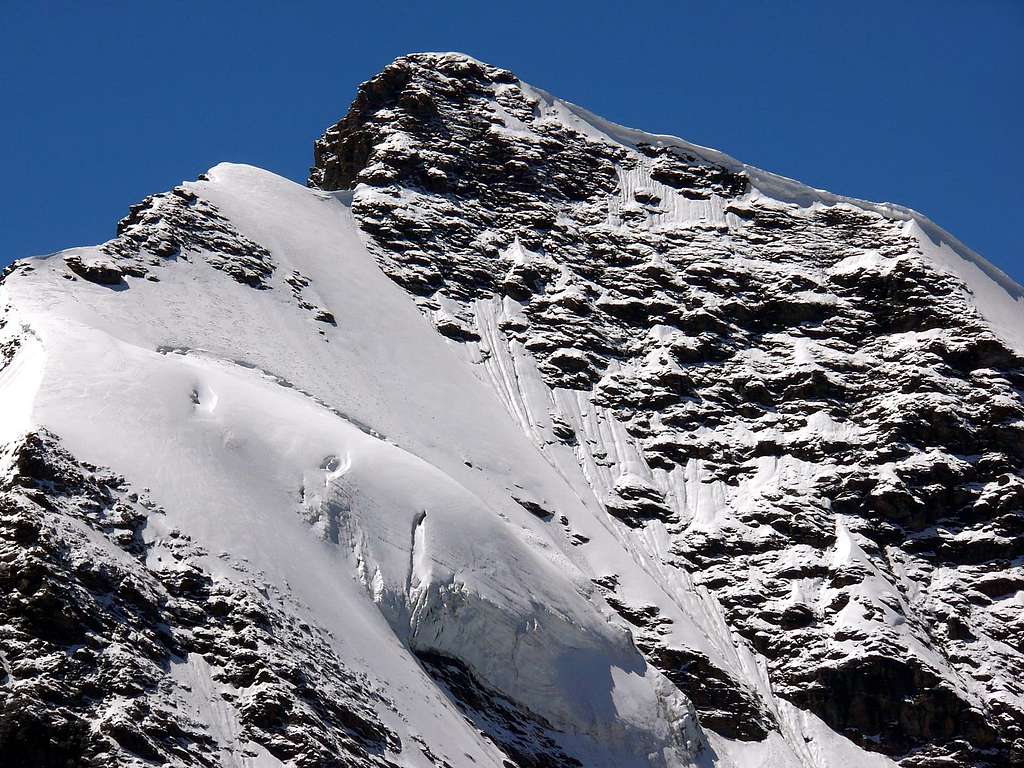
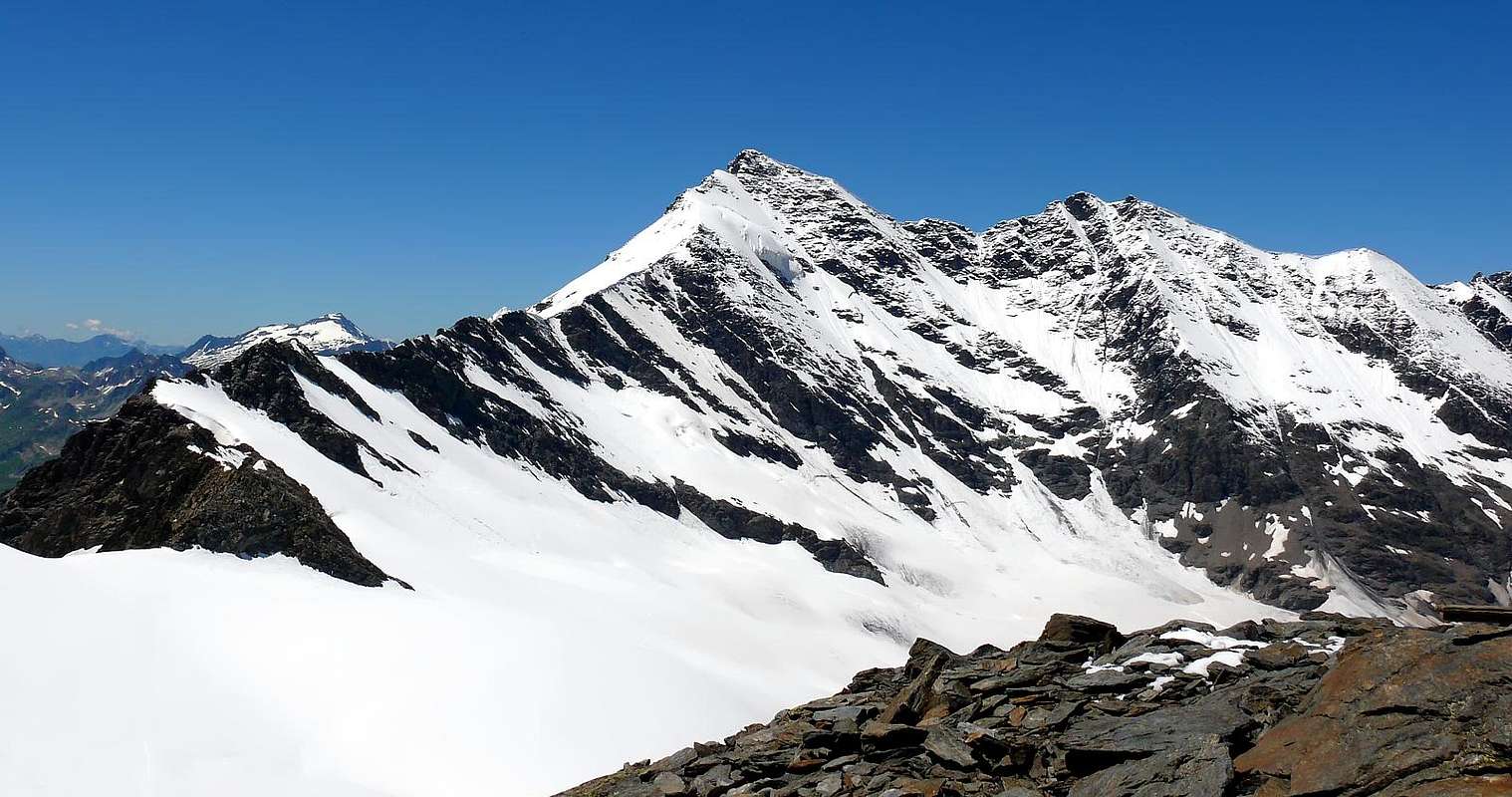
First Ascents
- W-SW Arête: Inhabitants of Tignes valley and soldiers, (1808?).
- W-SW Arête: W. Mathews with M. Croz, (Aug 5th, 1860), first recorded ascent.
- S-E Arête: W. A. B. Coolidge with Christian Almer (father and son), (Aug 06th, 1878).
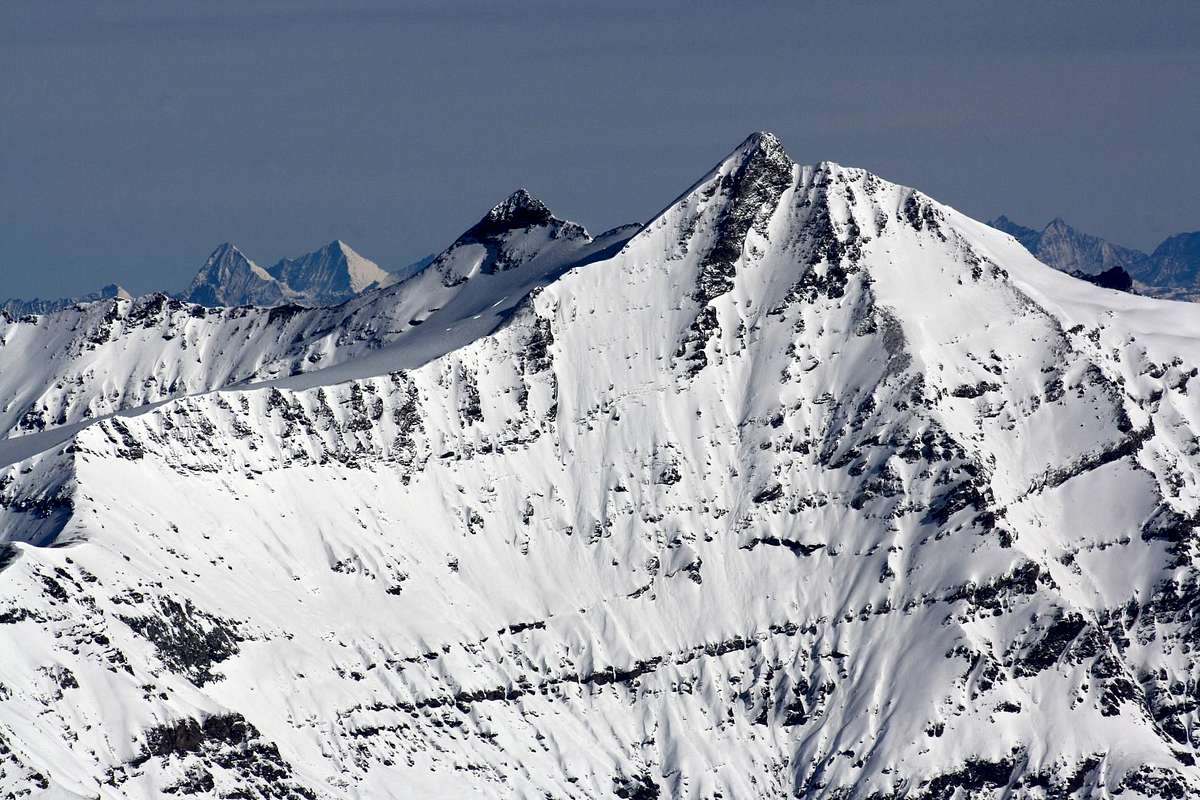
- S-E Arête: First Italian ascent: Filippo Vallino with guides Antonio Castagneri and G. B. Bich, (Aug 01th, 1885).
- S-E Crest from Colle della Sassière: Giovanni Bobba and Casimiro Therisod, (Aug 17th, 1889) in descent.
- S Wall: R. and M. Godefroy, (Sep 06th, 1893).
- S Wall: H. Mettrier (solo), (Aug 22th, 1901).
- S-W Wall and SE Arête: Giuseppe Quaglia and Francesco Sitia, (Aug 1919).
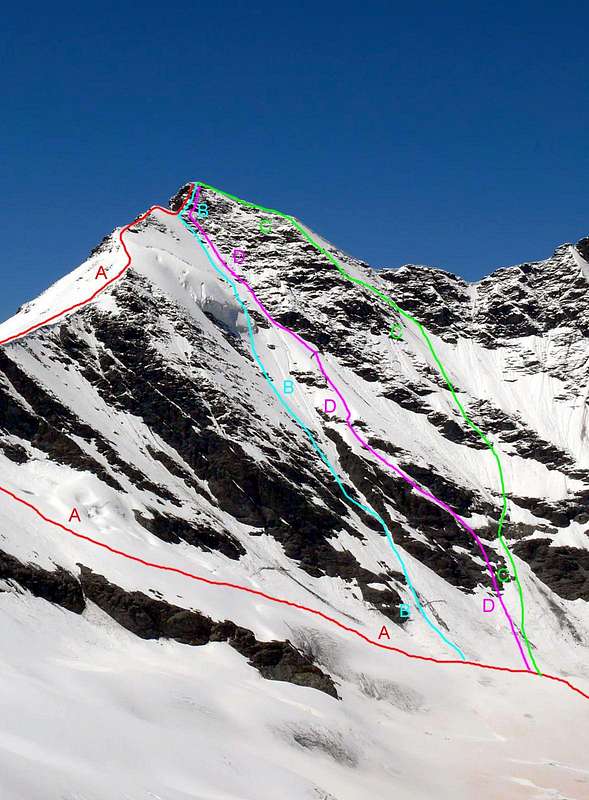
- N Arête (from Glacier du Fond): Giovanni Bobba and Casimiro Thérisod, (Aug 17th, 1889).
- E-NE Wall: Aldo Bonacossa and L. Hosquet, (Jan 30th, 1917).
- N-E Wall (Route of the Serouac): Cleto Frassy and Danilo Garin, (Jul? 1980?).
- N Arête (Integrale from Col Vaudet or Col di Suessa): Osvaldo Cardellina, Camillo Roberto Ferronato and Giuseppe Lamazzi, (Aug 24th, 1980).
- N-NE Wall (Direct route in descent): Osvaldo Cardellina, Camillo Roberto Ferronato and Giuseppe Lamazzi, (Aug 24th, 1980).
Getting There
- From Torino, Milano, etc: Motorway A5. Exit at Aosta Ovest. Drive on SS.26 toward Mont Blanc as far as Leverogne (780m).
- From Switzerland: through the Grand Saint Bernard Tunnel or the namesake Pass. Drive to Aosta, then follow the direction for Courmayeur on SS.26 as previously, reaching Leverogne.
- From France: through Mont Blanc Tunnel or Petit Saint Bernard Pass. It is not necessary to take Motorway A5: you can drive on SS.26, in the direction of Aosta as far as Leverogne.
- Once close to the Village of Leverogne (780m), turn left if you come from Aosta or turn right coming from Mont Blanc, following along the Regional Route for Valgrisenche. Pass many small Villages, including Rochefort, La Ravoire, Chamencon, La Bethaz, and Valgrisenche (1.664m), the main center of the namesake valley. Turn right for the Village of Bonne (1.810m) located near the western summit edge of the huge dam that forms the Beauregard Reservoir, practically empty for technical reasons. Past the small Village of Menthieu (1.842m), continue for approximately 5 km along the paved road, which follows parallel to the western shore of the lake, running high above it, and then descend leading to the old Pasture of Surier (1.758m), near the Village of Usellières (1.758m) at the southern end of the lake basin. Before the village there is a ample parking space where you can leave the car.
BY PLANE:
- Aeroporto "Corrado Gex" Saint Christophe (Aosta).
Route
The route described here is the Italian Standard Route along the Southeast Ridge from Colle Orientale della Sassière (3.274m). Really, the true standard route is the Western Ridge, from Glacier de la Sassière (North) and Réserve Naturelle de la Grande Sassière (South), which is entirely in France.
The Summit tower consists of 70/80 meters of broken rocks that are easily climbed (I°+ or maybe II°-/II°) along a gully and natural rocky steps. From the tower continue on easy ground to the aerial Summit (3.751m), paying close attention in case of fresh snow.
Descent: by the same route.
Discesa: tramiite lo stesso percorso.

Difficulty
This route is rated PD+. Pay attention to the many crevasses of Ghiacciaio di Gliairetta and, on the ridge, to the North-facing cornices.
Questo percorso è classificato PD+. Attenzione ai numerosi crepacci del Ghiacciaio di Gliairetta e, in cresta, alle cornici esposte a Nord.
Gear
Mountaineering equipment including rope, crampons, and ice axe.
Equipaggiamento da alpinismo inclusivo di corda, ramponi e piccozza.
Huts
Views from Becca della Traversiere
Campings
Remember that free camping is forbidden (except for emergency reasons, over 2.500m, from darkness until dawn).
Mountain Conditions
- Meteo: you can find all the needed informations at the official site of the Valle d'Aosta Region:
- Valle d'Aosta Meteo
Webcam
- WEBCAM on Aosta Valley:
- Webcam
Books and Maps
BOOKS:
- "Il Parco Nazionale del Gran Paradiso (Valli Soana-Orco-Rhêmes-Valgrisenche)" di Giulio Berutto, I.G.C. Torino 1979.
- "Guida dei Monti d'Italia – Alpi Graie Centrali" di Alessandro Giorgetta - Club Alpino Italiano/Touring Club Italiano, 1985 (in Italian).
- "Diari Alpinistici" di Osvaldo Cardellina e Indice Generale accompagnato da Schedario Relazioni Ascensioni 1964-2021 (inediti).
MAPS:
- Kompass "Gran Paradiso Valle d'Aosta Sentieri e Rifugi" Carta turistica 1:50.000.
- L'Escursionista "Valgrisenche Val di Rhêmes" Carta dei sentieri (n° 3) 1:25.000.
- Enrico Editore Ivrea-Aosta "Gruppo del Gran Paradiso" 1:50.000.
- I.G.C. Istituto Geografico Centrale "Valsavarenche-Valle di Rhêmes-Valgrisenche" Carta dei sentieri e dei rifugi (carta n° 102) 1:25.000.
Important Information
- REGIONE AUTONOMA VALLE D'AOSTA the official site.
- FONDAZIONE MONTAGNA SICURA Villa Cameron, località Villard de la Palud n° 1 Courmayeur (AO) Tel: 39 0165 897602 - Fax: 39 0165 897647.
- SOCIETA' DELLE GUIDE DI VALGRISENCHE
- A.I.NE.VA. (Associazione Interregionale Neve e Valanghe).

Useful Numbers
- Protezione Civile Valdostana località Aeroporto n° 7/A Saint Christophe (Ao) Tel. 0165-238222.
- Bollettino Meteo (weather info) Tel. 0165-44113.
- Unità Operativa di Soccorso Sanitario Tel. 118.




